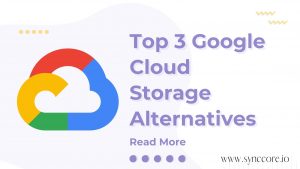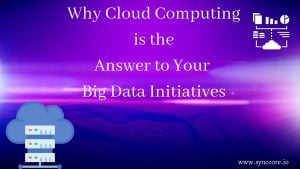Cloud platforms are a must-have for any company looking to make a name for itself in the digital world.
The ever-increasing demand for cloud platforms stems from organizations’ need to stay current with the latest data, insights, and software at all times to remain competitive.
While cloud platforms provide numerous benefits and make our lives easier, they are also becoming increasingly complex in the adoption process of a company attempting to determine its cloud strategy. The sheer number of cloud service types can be a real headache.
In this article, we’ll focus on the public cloud, the most straightforward and most convenient cloud platform available, and learn more about the benefits it has to offer as well as the challenges it brings.

Table of Contents
What is the public cloud?
The cloud migration and storage services provided by third-party cloud vendors over the internet are called public cloud computing. It provides organizations with the ability to choose their resources on-demand and a scalable platform and flexible payment plans.
How is the public cloud different from the private cloud?
A private cloud platform is a cloud service that an organization provides and manages internally. Personal cloud solutions are highly secure and provide optimized performance benefits because they are hosted on dedicated servers and have robust firewall access protocols.
On the other hand, a public cloud platform is a cloud service provided by third-party vendors. Customers share everyday computing and storage resources while adhering to appropriate security protocols, and the vendor manages the resources for a fee.
On an enterprise level, both private and public cloud platforms are viable for use in various applications, but limiting yourself to one of them may prevent you from getting the most out of your cloud experience. Organizations adopt hybrid cloud solutions and multi-cloud solutions, a merger of private and public platforms depending on the security and infrastructure requirements.
For a more secure cloud experience, a hybrid cloud strategy combines public cloud infrastructure as a service platform with private cloud data centers. In contrast, a multi-cloud strategy employs a variety of cloud platforms for various applications in a single network infrastructure.
Public cloud infrastructure
Public cloud vendors provide shared computing resources to multiple users and choose the best resources for their business. Because multiple tenants (organizations) use the same resources provided by the vendor, it is a multi-tenant architecture. Each user is provided with secure data storage, and the same servers will be used to host multiple applications belonging to different users.
Public cloud architecture can be classified into three types based on the three most common service models, which are as follows:
Users can request infrastructures such as servers, storage, and networking devices from public cloud vendors. Customers who use IaaS can also use the vendors’ additional services and features, such as maintenance, load balancing, and process monitoring.
PaaS is a cloud service in which a third-party vendor provides users with the hardware and software components they need to construct cloud-based application platforms. Users of PaaS don’t have to change their complete IT infrastructure; instead, they may access the vendor’s hosted infrastructure services via a web browser.
A software-as-a-service (SaaS) cloud model is one in which cloud service providers provide users with access to a fully developed application designed expressly for distribution. Organizations can utilize their tools with vendor-provided application programming interfaces, and software upgrades are rolled out equally to all users (APIs).
Advantages of public cloud

Many organizations have adopted public cloud platforms due to the reduced hassle and optimization benefits once the strategy is in place. Let’s take a closer look at the numerous benefits that the public cloud offers to understand its market popularity better.
The public cloud model employs a shared resources model, enabling cloud vendors to offer their services at a lower cost. Due to the lack of on-premises IT infrastructure and the virtualization of existing operating systems, users can reduce the cost of their hardware and networking assets, allowing them to save more money in the long run. Cloud services have become more affordable for small and large businesses because they eliminate operational and maintenance costs.
Users can use public cloud services to monitor their network usage, performance capabilities, and computing power in real-time and plan their cloud strategy accordingly. They do not need to rely on the service provider for these insights regularly.
Users of public cloud platforms benefit from greater scalability, allowing them to use more or fewer resources for each application as needed. Because of the available computing services and resources, infrastructure and traffic scalability – the ability to devote adequate add power for unexpected increases in business traffic – is achieved quickly.
Cloud data analytics are a significant benefit of public cloud computing. Organizations can collect cloud resource usage metrics and present business insights for a better future strategy.
Physical resources such as networking hardware and storage units and virtual resources such as virtual machines and disc snapshots are made available to all users in a pay-per-use system in the public cloud computing model. As a result, if the situation calls for it, all resources could be pooled to serve a single user with high performance, lower latency, and more significant storage requirements.
Organizations that use public cloud services are not responsible for the upkeep of the vendors’ resources. The vendor covers operational and maintenance costs and troubleshooting as part of their agreement, resulting in a stress-free cloud experience for users. Because public cloud deployments are done via a web interface, the cloud management provider handles disaster recovery in an unforeseen calamity.
Challenges of public cloud
Since public cloud services are sourced from outside sources, they have security implications and control issues. Let us now look at the drawbacks of public cloud computing and what businesses should keep in mind when implementing this strategy.
When an organization uses a public cloud service, it loses control over physical hardware standards, automation, access management, IT management, and technical support. Because all of these services are outsourced to an external vendor, you may need to modify several business processes to ensure a smoother transition to the cloud.
Since this cloud service provider hosts multiple cloud users on the same platform, data vulnerability remains a significant concern in the case of public cloud providers.
While vendors’ cloud security practices and promises are improving, it does not change that organizations are entrusting an external vendor with their data and processes and are therefore more vulnerable to a cyber attack than if they are on a private network.
Because public cloud platforms are hosted over the internet, with no reliance on on-premise infrastructure, a connectivity issue could spell disaster for the entire cloud platform.
One way to avoid this is to ensure that you have robust network connectivity at all times, regardless of the physical conditions.
Because of the rigidity of the multi-tenant architecture, public clouds may pose a headache for organizations with a complex network dependency between applications or an intertwined business model.
Businesses cannot customize or optimize the use of on-demand resources; they can only make the best of what the service provider offers. This one-size-fits-all methodology may pose a problem for businesses prone to rapid changes in their business and cloud strategy.
When the GDPR changes were released, every company doing business with the EU worked harder than ever to ensure compliance. Suppose a company uses public cloud services and wants to overcome a compliance barrier for a specific client or partner. In that case, providers may not deliver the service and ensure that all of their resources are compliant with every incoming update quickly enough.
When it comes to implementing a cloud strategy, uptime is a vital factor to consider. In the event of a vendor-side cloud outage, businesses will be forced to deal with unforeseen downtime that will disrupt their operations.
Devise a robust cloud strategy for your business
While public cloud may not be the sole viable option for your company’s cloud migration, it is a strong candidate for several applications with essential cloud storage and security requirements.
Using several cloud environments for different applications based on their requirements might make migrating to and running your organization on the cloud easier.
If you need cloud services, get in touch with us via [email protected] or Learn More: www.synccore.io



